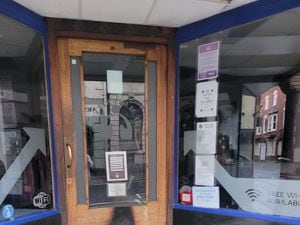Coercive control up but not convictions revealed in new figures show
New Police figures have revealed an increase in the number of people arrested for ‘coercive control’, but still only one in six are charged with the offence.

On 31 December 2015, controlling or coercive behaviour in an intimate or family relationship became a new offence under Section 76 of the Serious Crime Act 2015.
The term ‘coercive control’ spans a broad range of actions that are intended to intimidate, restrict and control a partner’s behaviour. This can include restricting access to money, refusing to socialise with family or friends, threatening to release intimate details or pictures, monitoring email and social media accounts and even tracking someone’s movements through smartphone software.
Under Freedom of Information, law firm Ridley & Hall asked all Police forces in England to reveal how many people were arrested, and how many people were charged under Section 76 of the Serious Crime Act 2015 for Controlling or Coercive Behaviour during the first 18 months of the new law.
Figures from 35 Police forces found that, in the first six months of the new law, 798 people were arrested and 130 were charged. The following year, that number had more than doubled to 1709 arrests and 287 people charged between 1 January and 30 June 2017.
In the 18 months from 1 January 2016 to 30 June 2017, a total of 3937 arrests were made but only 666 (16.9%) were charged (this includes figures from Hertfordshire Constabulary which provided figures as a total for the full 18 months).
Emma Pearmaine is Head of Family Law at Ridley & Hall and a long-term campaigner for victims of domestic violence. She says the rise in arrests is a positive sign of increased awareness, but more needs to be done to see abusers charged.
Emma comments: “Coercive control describes a complex web of sustained abuse, threats, intimidation and restrictions, where the victim lives in constant fear. It is a pattern that usually only ends when the victim finds the courage to seek help and leave, or something far more tragic happens.
“I was pleased to see a rise in the number of people arrested for coercive control, with some forces in particular visibly focusing on the issue. But we also know that gathering enough evidence to meet the demands of the Crown Prosecution Service to bring a charge is challenging, and many cases are dropped because of insufficient evidence or because the victim withdraws their support. Overall, only one in six people arrested under the new law are charged with that offence.
“The point where someone approaches the Police for help, or when an officer suspects and records that a person might be the victim of coercive control, is absolutely critical. Returning home to an abusive partner who is aware that the Police has become involved is a truly frightening prospect for the victim. They might find any access to money they had completely removed, and the seriousness of threats to themselves and their loved ones amplified. It is vital that victims are wrapped in the blanket of support that enables them to leave the abuser, the very moment they come forward and ask for help. This, however, requires more resources than is currently available.
"In a large proportion of cases, no one is charged because the victim decides not to support further Police action. This does not mean that a crime has not been committed, or that the abuse will stop, but most likely that fear has prevailed. Unless victims feel safe and able to leave at the point of reporting the abuse, they will remain trapped and at serious risk of harm in a huge proportion of cases. Everyone involved has a responsibility to make it possible to get to and remain in a safe place."
Emma is also Chair of the Corporate Alliance – a membership charity working with employers to lessen the impact of domestic violence in the workplace. She has previously provided training to Police forces around coercive control – something she continues to offer.
Emma says: “Emotional abuse is every bit as damaging to a person’s life as physical abuse, and it is vital that those who come forward are given every chance to escape the psychological captivity they are living in.
“Being able to spot the sometimes subtle signs that someone is being abuse is an acquired skill, and the more officers learn about coercive control, the more lives of women in particular will be saved. This is an area where I know for a fact that the time I spend teaching and raising awareness about domestic violence, equals lives saved.
“Everyone can help combat domestic violence and coercive control. If you experience or hear that a friend, family member or colleague is changing their behaviour because they are concerned about their partner’s reaction, then they are quite possibly suffering from abuse. Talk to them about it, acknowledge their fear and concerns for themselves and their family, and encourage them to seek help either from the Police, a specialist charity or a family lawyer who specialises in domestic violence.”
DCI Simon Brownsword from Staffordshire Police provided the following comment to Ridley & Hall about the latest figures: “Often abuse goes on over long periods of time. It is not about a single incident but involves systematic abusive behaviour. While not all of this abuse is violent the result is often that the victim will live in fear. We know this as research shows victims will often endure abuse on many occasions before asking for help and we are recognising and recording this more often. We continue to take a victim-focused approach and officers have been trained to take the time to understand what is really going on, listen to victims and look for signs of coercion or control. We recognise the effect, not only on the victim, but the wider families of those involved, such as children who grow up within violent or controlling environments.”





